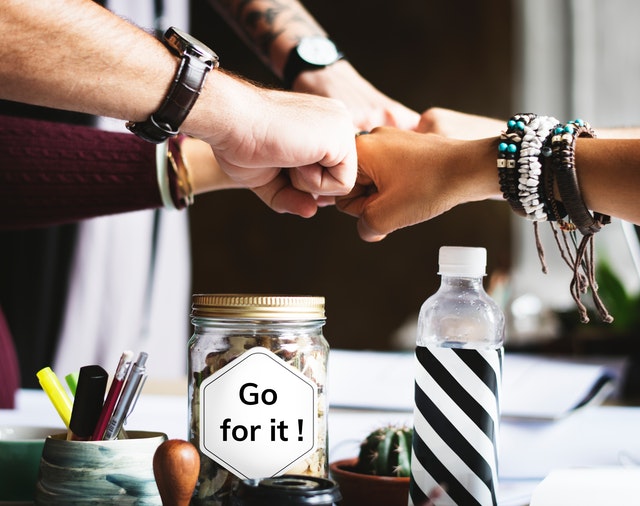The class is divided into teams of 4 students. The task is to create a tutorial for peers in any form on topics of critical digital literacy.
The Scrum Team decides on the form of the final product and creates its own user story first: we are the experts in charge of teaching all students in this classroom how best to: (example 1: find, quote, explain, make reference to primary sources) (example 2: recognise fake news and deep fake videos) (example 3: protect your mobile phone and personal data online) (example 4: what the creative commons is, and how appropriation relates to it) (example 5:…). The tutorial will teach X (my peers need to know), Y (my peers need to be able to) , and Z (why) by presenting final products A, B, and / or C. This tutorial will ask for immediate feedback from the audience.
The user story of the team on how to create the tutorial is broken down in steps in chronological order. This ordered list of tasks is the backlog. It is submitted to the teacher for approval.
The backlog is translated to the scrumboard by using Trello.
Our tasks are to become knowledgeable on our topic first by a set of reading tasks, listening-viewing tasks which we will approach by using the Trello Tool: Trello for Do – Did – Done. You can also decide to use a simple A-3 poster and use sticky notes which you move from doing to done (using a different colour for each team member).
Throughout the whole scrum sprint we will each create individual dialogue journals, and do a check-in & check-out every lesson. These are stand-ups the first 10 and last 10 minutes of every lesson. In these standups you ask 3 questions: what did we do last working session? What will we do today? What do we still need to reach our goals?
When the tutorial is finished the team must evaluate and decide if the final products and the tutorial meet the standard of quality set by the teacher and that has the approval of all team members.
We will create the tutorial in 6 lessons of 75 minutes.
These are the topics: digital privacy and online safety, deep fake videos and visuals, language as data and algorithms, primary sources, copyright. etc.
See this example ©Bea Leiderman
See Handeschool Groningen: Scrum and Education Work:
Scrum is a method to organise collaborative learning in 6 parts:
Team Formation
Sprint Planning
Standup (CHECK-IN & CHECK-OUT beginning / ending of each class)
Sprint Review: PRODUCT = 50% grade: test or oral/ written presentation. Prior to a Scrum, the Product Owner defines the acceptance criteria of the final product (criteria for grading, presentation guidelines, requirements).
Sprint Retrospective (HOW = functioning of team / individual members)
Personal Reflection (written): CHECK-OUT

The task challenges students on self-organisation and quality of work within a given time frame with clear learning goals (Acara / K-12 / CEFR / Dutch Curriculum of English and Computer Science)
More importantly, why to Scrum? To give students AUTONOMY, COLLABORATION, FLEXIBILITY, CREATIVITY, MOTIVATION, PRODUCTIVITY, and PURPOSE in a Self-Organising Team in a Co-Creative Method towards a Final Product by setting a Complex, Interesting and Self-Directing Task*.
*©2015 eduScrum Team
As a teacher I would like my students to be able to follow their own path within a specific set of knowledge and skills and become more digitally and information literate while working in a small group. I want them to work together at the same time, but not all on exactly the same subject matter. I would like them to go from the passive skills, reading and listening, to the active skills: speaking, writing. I would like them to start with a research question. I would like them to finish with a final product that instructs their fellow students.
Collaborative Learning
Collaborative learning takes places when different scrum team members use their talent in different roles to teach others when working together towards a final product which has to be instructive (knowledge development) or solve a particular problem (computational thinking).
Team members ask each other for help, give and receive feedback in a positive approach to learning. They respect differences, they negotiate, and commit to tasks within an agreed time planning. Students learn subject matter and social skills by interacting not only with their teacher, but mostly with each other. We need to prepare students for distant learning and online communication.
Collaborative Learning Skills – SLO
| Collaboration | The student can |
|---|---|
| communicating effectively | listening, observing, speaking clearly, reacting, discussing |
| asking, receiving feedback | |
| task fulfilment and team roles | recognising use of different team roles |
| sticks to deadlines, agreements | |
| responsible for own contribution and the group aim and result | |
| organising | can manage work processes |
| negotiating | |
| functioning in a team | supporting and coaching others |
| can handle different talents | |
| attitude | positive and open to other ideas |
| respecting differences | |
| wants a good result for the group | |
| self-confident |